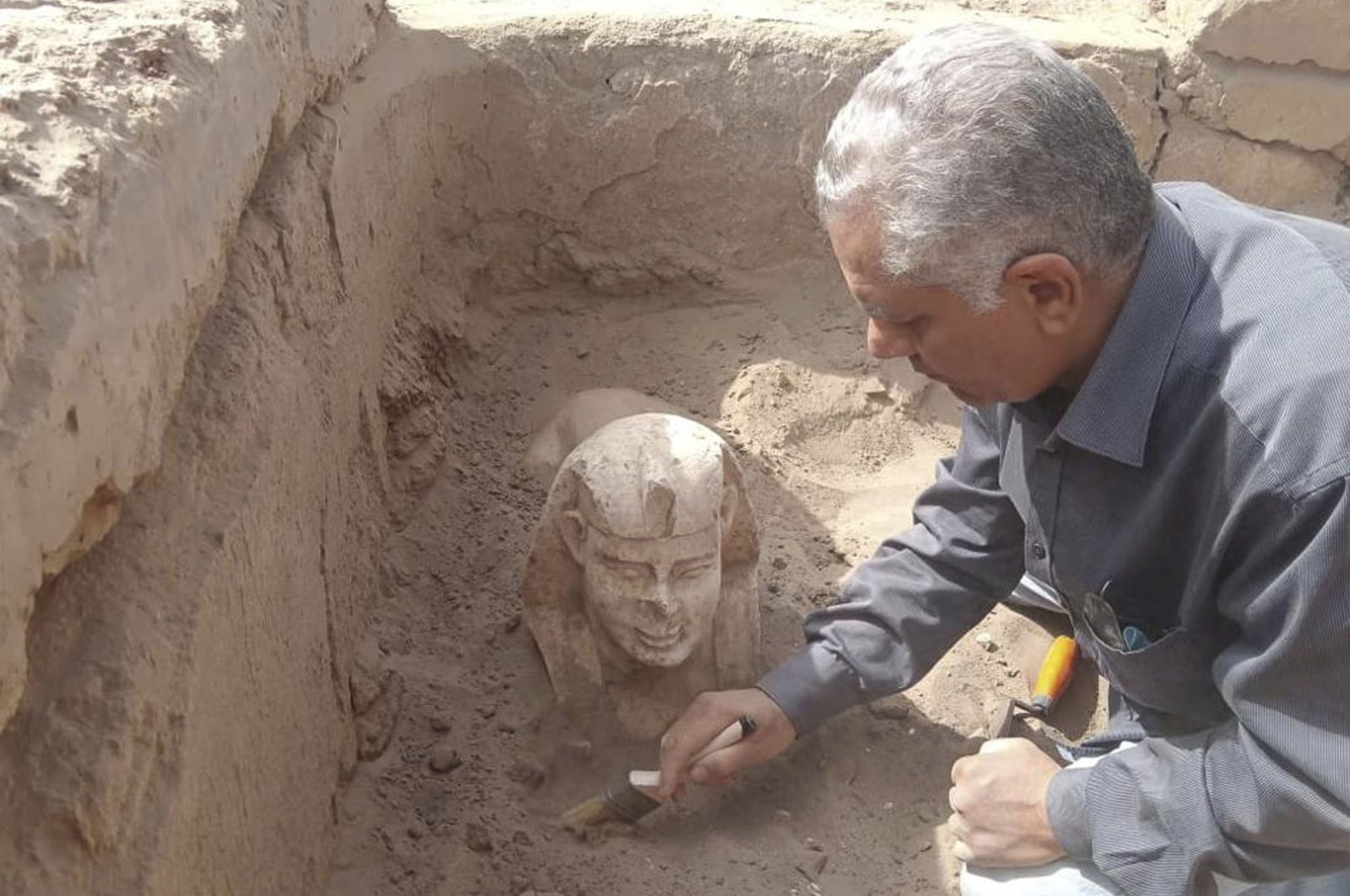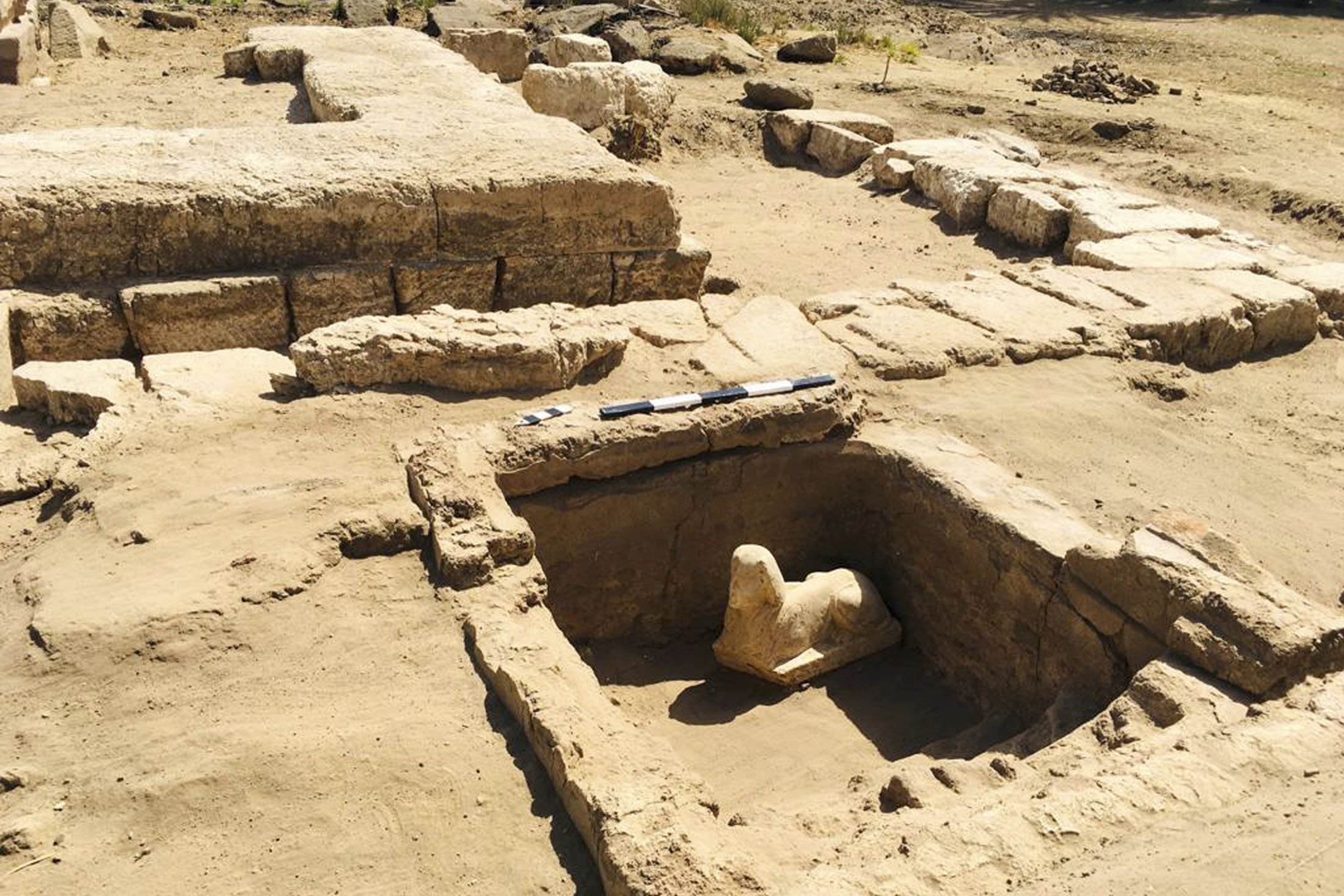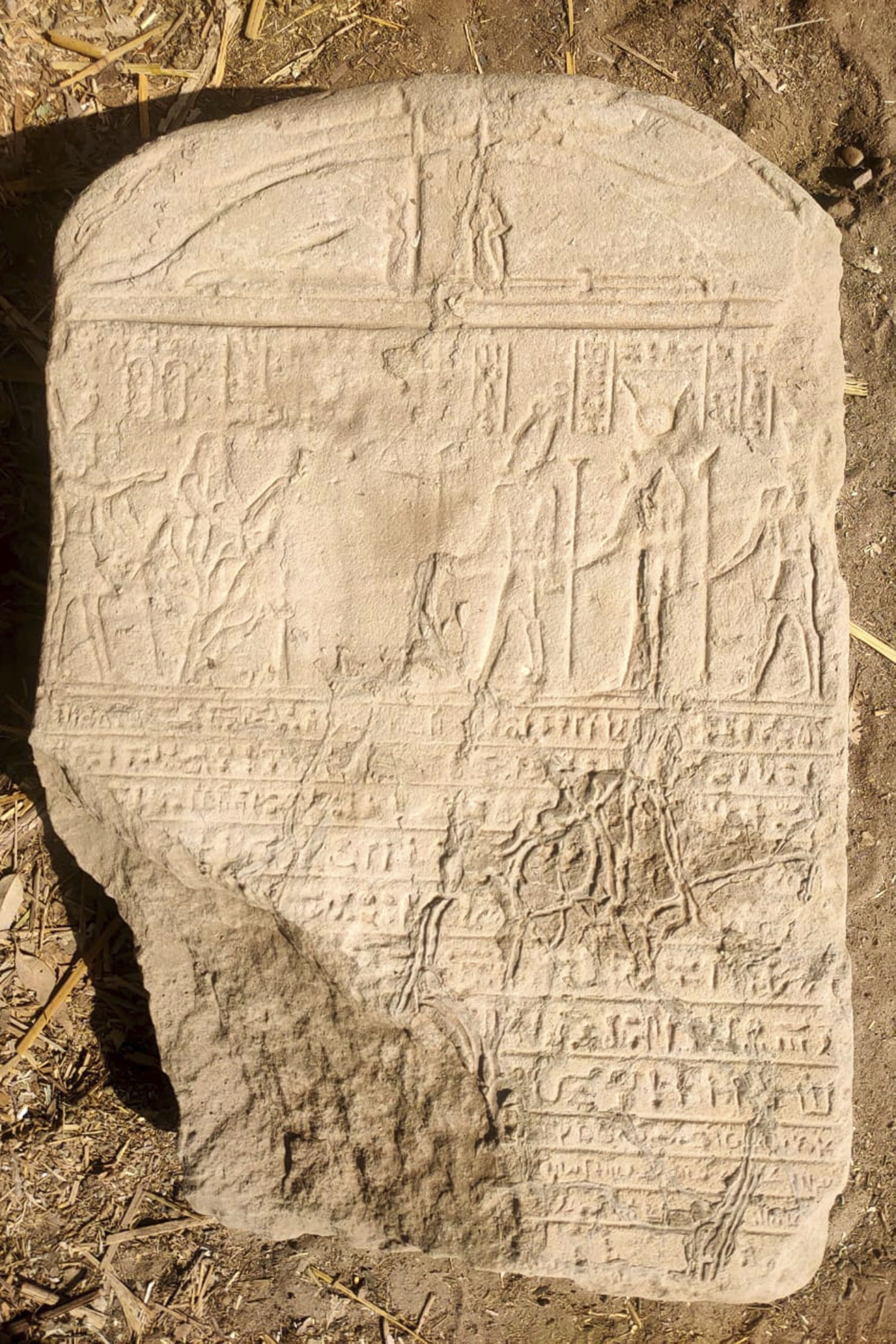Archaeologists in Egypt have unearthed the remains of a shrine in an ancient temple in the country’s south alongside a sphinx-like statue adorned with “a smiley face and two dimples,” the tourism and antiquities ministry announced.

The finding near the Hathor Temple – one of the country’s best-preserved ancient sites – is the latest in a series of discoveries over the past few months.
The limestone artifact, believed to be a stylized representation of an ancient Roman emperor, was found inside a two-level tomb near the temple in southern Egypt, the ministry said in a statement.

A sphinx statue believed to be made in the likeness of a Roman emperor is uncovered from an archaeological site in Qena, Egypt, March 6, 2023. (AP Photo)
Next to the “beautifully and accurately carved” sphinx, researchers had found “a Roman stele written in demotic and hieroglyphic” scripts, the ministry’s statement said.
Once fully deciphered, the stele may shed light on the identity of the sculpted ruler, who the Egyptian research team said could be Emperor Claudius.

A tablet dating to Ancient Roman times, written in Hieroglyphics and Demotic, uncovered from an archaeological site where a sphinx statue was discovered, in Qena, Egypt, March 6, 2023. (AP Photo)
Hathor Temple, about 500 kilometers (310 miles) south of the capital Cairo, was home to the Dendera Zodiac, a celestial map displayed at the Louvre in Paris since 1922, more than a century after Frenchman Sebastien Louis Saulnier had blasted it out of the temple. Egypt wants it back.
The country has unveiled significant archaeological discoveries in recent months, primarily in the Saqqara necropolis south of Cairo and in Giza, home of the only surviving structure of the seven wonders of the ancient world.
On Thursday, the antiquities ministry announced the discovery of a hidden nine-meter passage inside the Great Pyramid of Giza, which archaeologist Zahi Hawass said may lead to “the actual burial chamber” of pharaoh Khufu, or Cheops.
Further south, in Luxor, archaeologists had discovered a 1,800-year-old “complete residential city from the Roman era,” authorities announced in January.
Some experts see such announcements as having more political and economic weight than scientific. Despite a severe financial crisis, Egypt is counting on tourism to revive its vital tourism industry.
The government aims to draw in 30 million tourists annually by 2028, up from 13 million before the pandemic.